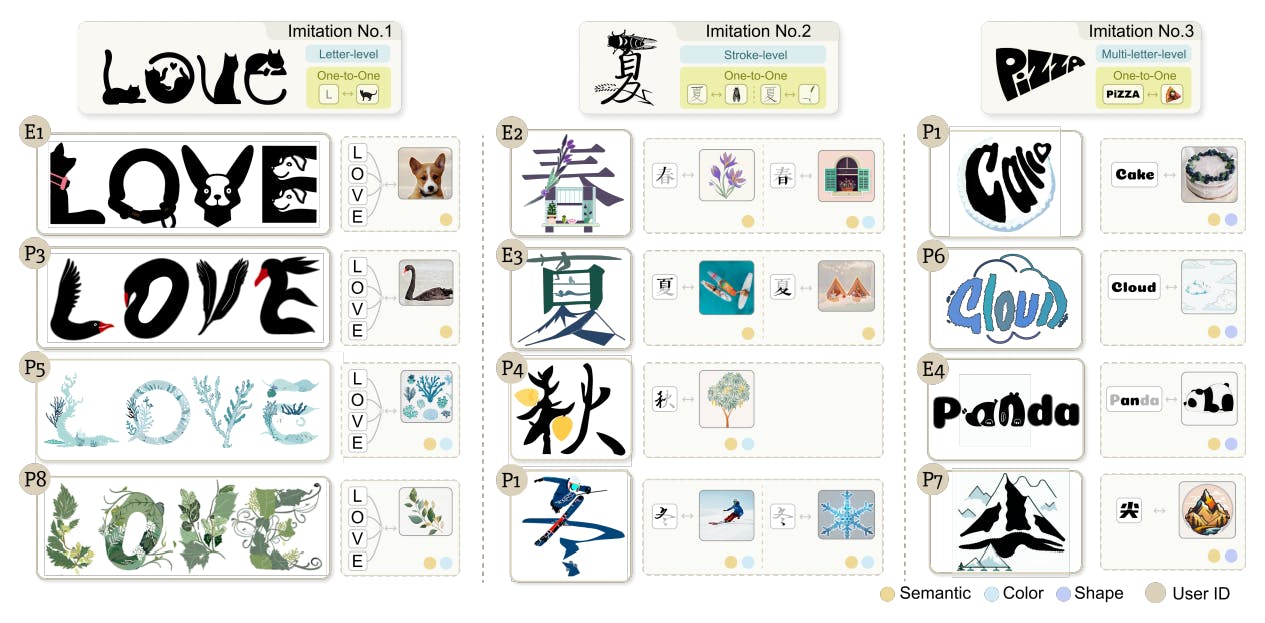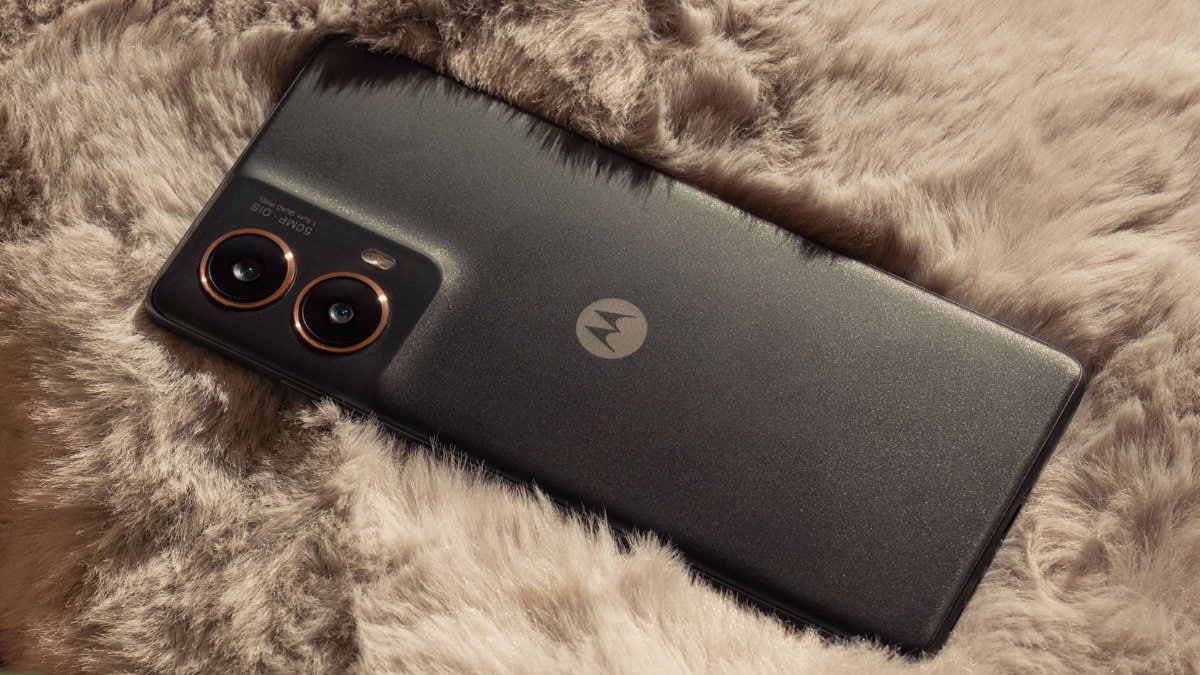Want to know which handsets can deliver the most eye-catching, Instagram-worthy shots? Here’s our breakdown of the best camera phones you can buy right now.
Although smartphones could never truly outpace the best cameras, the gap is a lot smaller than it’s ever been, with some professionals even preferring to use camera phones for their work, whilst video capabilities have also come leaps and bounds in the last few years. There’s no shortage of films now (such as 28 Years Later) that have been shot almost entirely on iPhones.
Of course, with the competition being so fierce, the big companies involved have tried to outdo one another by carving out their select niches. For instance, Apple has invested plenty in video, while Samsung and Google have focused their efforts on zoom and portrait photography respectively.
Thankfully, you no longer need to spend a fortune in order to have access to great cameras on your smartphone. If you are shopping for one of the best mid-range phones, or even the best budget phones, then there are quite a few devices in those price ranges that can deliver on detailed and colourful photography.
We know this because every phone that lands on our desks, regardless of price tag, is put through the same rigorous testing. When it comes to camera phones, we will take pictures in a variety of scenarios, including dimly lit environments and the great outdoors at night-time, so you can know before purchasing whether a phone is really up to the task.
In our experience, these test results are essential for painting a more accurate picture of how capable a phone’s cameras actually are. Just because a company touts a high megapixel count, that doesn’t necessarily mean that the phone in question can put out good photos – there’s also a lot of computational processing that also needs to be factored in.
Keep reading on to see which camera phones have passed our tests with flying colours, otherwise you can check out our guide to the best phones for a more general overview of the devices that have wowed our experts in 2025.
SQUIRREL_ANCHOR_LIST
Learn more about how we test mobile phones
We review a smartphone’s camera based on our experience with it, not a manufacturer’s claims or boasts. We shoot sample images and video in varying conditions to properly test its skills and we include sample images in our review wherever possible.
If a smartphone has a specific camera setting – a night mode, for example – we’ll test it thoroughly, while always comparing it to what else is on the market.
Pros
- Exceptional camera performance across the board
- Snapdragon 8 Elite power
- Pixel-packed 6.7-inch screen
- All-day battery life and rapid charging
Cons
- Curved display can lead to mispresses
- Only four OS upgrades promised
Pros
- Exceptional battery life
- Larger screen with impossibly thin bezels
- Top-end processing power
- Impressive video quality
Cons
- Apple Intelligence isn’t that smart or widely available
- Camera Control is awkward to use
- Very expensive
Pros
- Redesigned chassis feels good in the hand
- Oodles of power under the hood
- Excellent camera performance
- Gorgeous display with super-slim bezels
Cons
- Much of the camera hardware remains unchanged
- Battery doesn’t last as long as 2025 rivals
- New Galaxy AI features are limited
Pros
- Redesigned chassis looks way more modern
- Holistic, genuinely helpful approach to AI
- Amazing photo and video capabilities
- All-day battery life
Cons
- Second price hike in two years
- Can get hot when gaming
- Tensor G4 isn’t much more powerful than the G3
Pros
- Impressive camera performance across the board
- All-day battery life and then some
- Pearl White finish is rather unique
- Dimensity 9400 performance
Cons
- Thicker bezels than the regular Find X8
- Pre-installed bloatware
- Not the fastest charging around
Pros
- Epic battery life
- Grippy, lightweight design
- Camera’s telephoto macro mode is brilliant
Cons
- It’s very expensive
- No US availability
- Zoom camera results can be a bit grainy
Pros
- Highest-resolution telephoto lens around
- Plenty of power under the hood
- Top-end display experience
Cons
- AI Super Zoom leaves much to be desired
- Smaller battery than its predecessor
- Quite similar to Honor Magic 6 Pro
Pros
- Sleek, grown-up looks
- Wonderfully efficient
- Gorgeous OLED screen
Cons
- AI camera features can leave images feeling quite synthetic
- MagicOS 9 may be a divisive distro of Android
Pros
- Best battery life of any Pixel
- Clean, more understated look
- Great camera performance
- Premium AI features
Cons
- Thick screen bezels look dated
- No dedicated zoom lens
- Tensor G4 not as powerful as other flagship chips
- Slow charging
-
Exceptional camera performance across the board -
Snapdragon 8 Elite power -
Pixel-packed 6.7-inch screen -
All-day battery life and rapid charging
-
Curved display can lead to mispresses -
Only four OS upgrades promised
Few phones excel as much as the top-end Xiaomi 15 Ultra when it comes to smartphone camera photography – even if it has an ultra-premium price tag to match. The phone’s focus on camera tech should be evident not only from the sheer size of the camera housing on the rear, but also from the number of cameras on offer.
The star of the show is the 50MP main camera and its massive 1-inch sensor, allowing it to capture more light and detail than the vast majority of the competition. We found it to be an absolute joy to use, capturing crisp, vibrant and well-focused shots with the tap of a button, offering more personality than those shot with the Galaxy S25 Ultra.
That’s paired with a 50MP 3x floating telephoto lens that, in addition to capturing excellent shots with a DSLR-like bokeh, can double up as a capable macro lens – though it’s the 200MP 4.3x periscope lens that’s most interesting. It boasts the largest sensor and largest resolution of any periscope lens on the market right now, delivering incredibly detailed results at way beyond the 30x mark, going up to 120x if you really need it.
That experience is rounded off by a 50MP ultrawide lens. Though not autofocus-enabled like some of the competition, that’s only really needed for macro shots – and the telephoto does an excellent job in that department. That’s paired with 8K video capture, Leica-branded filters and shooting modes and AI photo tools to boot.
It’s not just a great camera phone either; it offers the top-end Snapdragon 8 Elite, solid all-day battery life and rapid 90W charging to boot.
-
Exceptional battery life -
Larger screen with impossibly thin bezels -
Top-end processing power -
Impressive video quality
-
Apple Intelligence isn’t that smart or widely available -
Camera Control is awkward to use -
Very expensive
If you’re looking for a smartphone that’ll simply deliver a top-notch camera experience, the iPhone 16 Pro Max (or the smaller Pro model) are easy recommendations to make.
Apple’s latest flagship is reliable in all conditions, captures the best video out of any other phone on this list, and boasts three distinct cameras for versatility, with each capturing different focal lengths.
The zoom skills on the Galaxy S24 Ultra still best those of the iPhone 16 Pro Max, offering a way better digital zoom, but the 48MP main and upgraded 48MP ultrawide lens help give Apple’s top-end iPhone the edge in everyday use.
When compared to many of the other phones on this list, the shots from the iPhone are a little more realistic and skin tones feel more natural. There’s a dedicated Night Mode for shooting in darker surroundings, and the effects are great, with plenty of detail retained and dark spots kept mostly free of noise.
The excellent results continue when we look at video capture. While it still doesn’t shoot video in the same 8K resolution as the S24 Ultra, the 4K capture we recorded was well-stabilised without looking fake, and packed the same great colour reproduction as the photos. The Cinematic Mode supports 4K, there’s an Action Mode for upping the stabilisation and Apple’s audio editing features are second to none.
On top of the camera itself, you’ll also be treated to good battery life, a gorgeous display, a well-built titanium body and USB-C – a feature that allows you to plug in SSDs for higher-quality shooting.
-
Redesigned chassis feels good in the hand -
Oodles of power under the hood -
Excellent camera performance -
Gorgeous display with super-slim bezels
-
Much of the camera hardware remains unchanged -
Battery doesn’t last as long as 2025 rivals -
New Galaxy AI features are limited
Samsung’s flagship smartphone has held this spot for quite a few years now, and with the Samsung Galaxy S25 Ultra now on the scene, that’s unlikely to change any time soon. There’s a case to be made that the S25 Ultra has the most versatile camera setup of any phone on the market, with a main 200MP lens, 10MP 3x and 50MP 5x sensors, alongside the new and improved 50MP ultrawide, but it’s in zoom photography where no other phone comes close.
When diving into 30x zoom on the 50MP 5x lens, it’s incredible to see just how much detail the S25 Ultra is able to capture. This isn’t just a great phone for trying to photograph something that’s slightly out of your way, but you also ascertain a better look at objects or subjects far off in the distance. Think of moments like trying to photograph a singer at a stadium gig or getting a specific framing on a vista found on holiday, and you’ll understand what we mean.
After those zoomed-in shots are taken, you have plenty of options to play around with your findings courtesy of Galaxy AI. Features like generative fill are available, giving you a more robust AI toolset than most phones which can make it easy to sharpen and reframe pictures before they’re shared.
It’s also worth mentioning that the S25 Ultra’s video chops have been given a boost as you can now shoot footage in LOG format, opening up compatibility with LUTS for filmmakers to get the exact cinematic style they want to achieve.
-
Redesigned chassis looks way more modern -
Holistic, genuinely helpful approach to AI -
Amazing photo and video capabilities -
All-day battery life
-
Second price hike in two years -
Can get hot when gaming -
Tensor G4 isn’t much more powerful than the G3
If you’re purely wanting a phone camera for stills photography we think the Pixel 9 Pro XL is the one to go for, just like the Pixel 8 Pro before it – and the Pixel 7 Pro before that.
The way Google’s processing utilises HDR to level out contrast and exposure is fantastic, ensuring photos taken on sunny days are unmatched in the mobile space. It’s almost effortless to capture a great-quality image on the Pixel 9 Pro XL.
But it’s more than just a good snapper; the colours captured are way more true to life than the over-saturated competition, and Google’s skin tone reproduction tech remains the best in the industry. This helps give photos snapped on the Pixel 9 Pro XL a rather pro, high-end look, complete with impressive autofocus tech that nails it every single time.
Google’s Night Mode remains strong – though not the quickest to capture – and does a great job at producing bright and detailed images in low light, though not to the point where it’s unnaturally light. As with daylight photography, it captures something more true to life than its rivals.
The zoom skills of this phone’s 48MP, 5x telephoto are on par with the iPhone 16 Pro, but can’t quite compare to the S24 Ultra and its 100x digital zoom, instead capping out at 30x. The 48MP ultrawide has had a boost with a new, larger sensor that helps improve the image quality of images taken by the auxiliary lens.
The Pixel 9 Pro XL also impressed our reviewer with its numerous AI tricks, from the photo and camera tricks we know and love to new features like on-device support for Google Gemini, Gemini Live, Pixel Screenshots and Pixel Studio, just to name a few. It also didn’t struggle to deliver all-day battery life, making it a great option overall, not just when it comes to photography.
-
Impressive camera performance across the board -
All-day battery life and then some -
Pearl White finish is rather unique -
Dimensity 9400 performance
-
Thicker bezels than the regular Find X8 -
Pre-installed bloatware -
Not the fastest charging around
Smartphones across the board have been getting better at capturing great low-light shots which is why this particular category is quite contentious but for the time being, it’s the Oppo Find X8 Pro that takes the crown.
The main reason why the X8 Pro is able to achieve such a high bar of quality in low light settings is because of Oppo’s HyperTone Image Engine which works by combining nine RAW frames together before the final conversion into JPEG (for uploading and sharing). This, combined with the main 1/1.4in sensor allows for plenty of light to pass through, creating a substantial amount of detail in the final product.
We found that this quality was consistent across almost all of the X8 Pro’s sensors with the 6x lens being the only exception. The 32MP selfie camera isn’t too much to write home about either, but because of how good those rear-cameras are, it’s far more beneficial if you just bring one of the best smartphone gimbals into the mix and use those higher-quality sensors for group shots.
On a separate note, portrait photography is a real joy on the Find X8 Pro thanks to the inclusion of several Hasselblad-inspired modes. Not too dissimilar to the brilliant portraiture captured on the Honor 200 Pro, the X8 Pro can hold its own here, helping you to look your best in the process.
-
Epic battery life -
Grippy, lightweight design -
Camera’s telephoto macro mode is brilliant
-
It’s very expensive -
No US availability -
Zoom camera results can be a bit grainy
It wouldn’t be a camera phone chart without an Xperia present, and the Sony Xperia 1 VI is an easy winner for professional photographers.
Rather than packing in the most pixel-packed sensor or the largest sensor around, Sony has taken a different approach with its Xperia 1 VI rear camera offering. Much like its predecessor, the main 52MP Exmor T sensor has a unique two-layer transistor within the CMOS that allows for a big improvement to low-light capabilities while still retaining a fairly slimline camera bump.
That’s flanked by a 12MP ultrawide and an upgraded 12MP telephoto lens with an impressive 5.2x optical zoom – ideal for close-ups and portrait photography. The latter also produces impressive macro photos with pro-level elements like an adjustable focus and focus overlays to help you really nail the close-up focus. It’s hands-down the best macro camera you’ll find on any smartphone right now.
Macro photography aside, our reviewer was impressed with the quality of the main lens both in well-lit and low-light environments, with decent colour and detail on offer. While previous Xperia smartphones had a bevvy of Pro-level camera and audio apps, that has been rolled (for the most part) into the main Camera app, providing all the tools you need without switching between apps. It’s certainly more user-friendly than it used to be.
Camera chops aside, the Xperia 1 VI is very much a top-end Sony smartphone with its blocky, angular design, a new shorter, squatter FHD+ display and Snapdragon 8 Gen 3 performance. It’s also pretty solid on the battery front, with our reviewer squeezing an incredible three days out of the phone with light usage.
The catch? All that tech comes at a cost, with the Xperia 1 VI starting at £1,299, making it one of the most expensive phones around right now.
-
Highest-resolution telephoto lens around -
Plenty of power under the hood -
Top-end display experience
-
AI Super Zoom leaves much to be desired -
Smaller battery than its predecessor -
Quite similar to Honor Magic 6 Pro
From Galaxy AI to Apple Intelligence, there’s now no shortage of AI tricks to be found on smartphones nowadays, and we anticipate that the competition is only going to become more fierce in this area over the next few years. For now however, it’s the Honor Magic 7 Pro that’s leading the pack at the point where AI and photography converge.
One of the phone’s big new features is AI Super Zoom, which can be impressive or misguided depending on how you use it. The feature is supposed to use AI to overhaul the quality of a zoomed in shot where clarity has been lost, but in actuality, the mode uses AI to create an entirely new image based on the picture you’ve taken.
By the company’s own admission, the feature is designed to be used for landscape photography and in this regard, it performs its task quite well. When testing the camera at a mountain range in Slovenia, AI Super Zoom turned a blurry shot into one that was sharp, in focus and far more picturesque. However, when shooting a collection of trees, the AI would add flowers and fauna that simply weren’t there before, taking away from the original intent of the shot. There’s definitely some promise here, but the feature’s efficacy depends entirely on how you use it.
Luckily, there are areas where the implementation of AI is far more seamless, including the Magic 7 Pro’s AI-enhanced portraits, which uses the technology to make sure that either you, or your subject, look incredible.
All of the usual AI editing features are here too, with an AI-powered eraser that can remove unwanted objects, alongside ‘AI Outpainting’ which can add generative fill around your photo to expand its borders.
-
Sleek, grown-up looks -
Wonderfully efficient -
Gorgeous OLED screen
-
AI camera features can leave images feeling quite synthetic -
MagicOS 9 may be a divisive distro of Android
The Honor 400 Pro impresses with its versatile triple camera system, led by a huge 200MP main sensor, a 50MP telephoto with 3x optical zoom and a 12MP ultrawide.
In good lighting, both the main and ultrawide cameras deliver detailed, natural-looking images, while the telephoto lens maintains colour and clarity for everyday and social media-worthy shots. There’s even a macro mode available for close-up detail.
The standout feature of the Honor 400 Pro has to be Honor’s exclusive collaboration with Parisian portrait studio Studio Harcourt, which began with the 200 series last year and continues here.
The phone offers three Studio Harcourt portrait effects to choose from: the striking black-and-white Harcourt Classic, the warm and inviting Harcourt Colour and the more natural Harcourt Vibrant. These modes bring a studio-quality, artistic touch to portrait photography that helps the Honor 400 Pro stand out from rivals.
AI features are prominent, providing upscaling and editing tools, though they can sometimes make images look a bit synthetic – especially at higher levels of zoom or with aggressive background blur.
Overall, the Honor 400 Pro is a strong all-rounder for photography, but especially if you value creative portrait options.
-
Best battery life of any Pixel -
Clean, more understated look -
Great camera performance -
Premium AI features
-
Thick screen bezels look dated -
No dedicated zoom lens -
Tensor G4 not as powerful as other flagship chips -
Slow charging
Google’s Pixel line has always impressed with its camera prowess, and the mid-range Pixel 9a continues that legacy.
This year’s model brings a fresh design that sets it apart from the flagship Pixel 9, ditching the iconic camera bar for a more understated, near-flush dual camera housing. While the look is simpler, it’s practical and comfortable in hand, and the improved IP68 water and dust resistance is a nice touch.
The main star of the show is, of course, the cameras. It features a new 48MP main camera that, despite a lower megapixel count than the 8a, offers better results with a larger sensor and wider aperture. Google’s image processing remains top-tier, producing photos with accurate colours and skin tones, even in challenging conditions.
The lack of a dedicated zoom lens is a minor letdown, especially as some rivals now offer telephoto options, but Google’s digital zoom is still among the best in its class.
Video capture maxes out at 4K@60fps, and the pleasing, natural colours seen in stills carry over to video as well.
Other key features include the use of the same Tensor G4 chipset as the flagship Pixel 9, as well as Google’s clean, AI-infused approach to Android. It’s also a great performer in the battery department with a larger 5100mAh cell that easily lasts a full day and often well into the next.
FAQs
Optical zoom is a camera phone feature that allows you to take images of your subject from afar without allowing the quality to suffer as you might see with digital zoom.
Having a telephoto lens on your phone lets you get very close to your subject without compromising image quality.
OIS – or optical image stabilisation – uses a gyroscope to compensate for shake, keeping your videos stable and your images crisp even in low light.
Test Data
| Xiaomi 15 Ultra | Apple iPhone 16 Pro Max | Samsung Galaxy S25 Ultra | Google Pixel 9 Pro XL | Oppo Find X8 Pro | Sony Xperia 1 VI | Honor Magic 7 Pro | Honor 400 Pro | Google Pixel 9a | |
|---|---|---|---|---|---|---|---|---|---|
| Geekbench 6 single core | 2891 | 3338 | 2886 | 1865 | 2792 | 2140 | 2981 | 2116 | 1652 |
| Geekbench 6 multi core | 8764 | 8167 | 9515 | 4144 | 8436 | 6372 | 8318 | 6519 | 3801 |
| Max brightness | – | – | – | 3000 nits | – | – | – | – | – |
| 1 hour video playback (Netflix, HDR) | 5 % | 6 % | – | 6 % | 6 % | 5 % | 7 % | 4 % | 1 % |
| 30 minute gaming (light) | 6 % | 4 % | 7 % | 11 % | – | 5 % | 6 % | 7 % | 6 % |
| Time from 0-100% charge | 91 min | 106 min | 62 min | 80 min | 50 min | 82 min | 89 min | 47 min | 108 min |
| Time from 0-50% charge | 29 Min | 30 Min | 20 Min | 24 Min | 20 Min | 29 Min | 36 Min | 17 Min | 40 Min |
| 30-min recharge (included charger) | – | – | – | – | 70 % | – | – | – | – |
| 15-min recharge (included charger) | – | – | – | – | 39 % | – | – | – | – |
| 30-min recharge (no charger included) | 52 % | 50 % | 70 % | 62 % | – | 51 % | 43 % | 77 % | 40 % |
| 15-min recharge (no charger included) | 30 % | 27 % | 35 % | 29 % | – | 25 % | 24 % | 44 % | 22 % |
| 3D Mark – Wild Life | – | 4128 | 6680 | 2511 | 6387 | 4580 | 6574 | 4614 | 2597 |
| GFXBench – Aztec Ruins | – | 60 fps | 78 fps | 44 fps | 109 fps | 98 fps | 106 fps | 61 fps | 66 fps |
| GFXBench – Car Chase | – | 60 fps | 77 fps | 53 fps | 108 fps | 108 fps | 118 fps | 61 fps | 79 fps |
Full Specs
| Xiaomi 15 Ultra Review | Apple iPhone 16 Pro Max Review | Samsung Galaxy S25 Ultra Review | Google Pixel 9 Pro XL Review | Oppo Find X8 Pro Review | Sony Xperia 1 VI Review | Honor Magic 7 Pro Review | Honor 400 Pro Review | Google Pixel 9a Review | |
|---|---|---|---|---|---|---|---|---|---|
| UK RRP | £1299 | £1199 | £1249 | £1099 | £1049 | £1299 | £1099 | £699.99 | £499 |
| USA RRP | – | $1199 | $1299 | $1099 | – | Unavailable | Unavailable | – | $499 |
| EU RRP | – | €1449 | – | – | – | – | €1299 | – | – |
| Manufacturer | Xiaomi | Apple | Samsung | Oppo | – | Honor | Honor | ||
| Screen Size | 6.7 inches | 6.9 inches | 6.9 inches | 6.8 inches | 6.78 inches | 6.5 inches | 6.8 inches | 6.7 inches | 6.3 inches |
| Storage Capacity | 512GB, 1TB | 256GB, 512GB, 1TB | 256GB, 512GB, 1TB | 128GB, 256GB, 512GB, 1TB | 512GB | 256GB, 512GB | 512GB | 512GB | 128GB, 256GB |
| Rear Camera | 50MP + 50MP + 200MP + 50MP | 48MP + 48MP + 12MP | 200MP + 50MP + 50MP + 10MP | 50MP + 48MP + 48MP | 50MP + 50MP + 50MP + 50MP | 48MP + 12MP + 12MP | 50MP + 50MP + 200MP | 200MP wide, 50MP telephoto, 12MP ultrawide | 48MP + 13MP |
| Front Camera | 32MP | 12MP | 12MP | 42MP | 32MP | 12MP | 50MP | 50MP main, 2MP depth | 13MP |
| Video Recording | Yes | Yes | Yes | Yes | Yes | Yes | Yes | Yes | Yes |
| IP rating | IP68 | IP68 | IP68 | IP68 | IP69 | IP68 | IP69 | IP68 | IP68 |
| Battery | 5410 mAh | 4685 mAh | 5000 mAh | 5060 mAh | 5910 mAh | 5000 mAh | 5270 mAh | 5300 mAh | 5100 mAh |
| Wireless charging | Yes | Yes | Yes | Yes | Yes | Yes | Yes | Yes | Yes |
| Fast Charging | Yes | Yes | Yes | Yes | Yes | Yes | Yes | Yes | – |
| Size (Dimensions) | 75.3 x 9.4 x 161.3 MM | 77.6 x 8.3 x 163 MM | 77.6 x 8.2 x 162.8 MM | 76.6 x 8.5 x 162.8 MM | 76.7 x 8.3 x 162.3 MM | 74 x 8.2 x 162 MM | 77.1 x 8.8 x 162.7 MM | x x 8.1 MM | 73.3 x 8.9 x 154.7 MM |
| Weight | 226 G | 227 G | 218 G | 221 G | 215 G | 192 G | 223 G | 203 G | 186 G |
| ASIN | – | B0DGHZ1MC2 | B0DPR5MYZ9 | – | – | B0D235TYYX | B0DQ5JLVJP | – | B0DSWFHTL2 |
| Operating System | HyperOS 2 (Android 15) | iOS 18 | OneUI 7 (Android 15) | Android 14 | Android 15 (ColorOS 15) | Android 14 | MagicOS 9 (Android 15) | Android 15 | Android 15 |
| Release Date | 2025 | 2024 | 2025 | 2024 | 2024 | 2024 | 2024 | 2025 | 2025 |
| First Reviewed Date | 02/03/2025 | 13/11/2024 | 30/01/2025 | 21/08/2024 | 21/11/2024 | 28/06/2024 | 17/01/2025 | 21/05/2025 | 10/04/2025 |
| Resolution | 3200 x 1440 | 1320 x 2868 | 1440 x 3120 | 1344 x 2992 | 2780 x 1264 | 1080 x 2340 | 1280 x 2800 | 2800 x 1280 | 1080 x 2424 |
| HDR | Yes | Yes | Yes | Yes | Yes | Yes | Yes | Yes | Yes |
| Refresh Rate | 120 Hz | 120 Hz | 120 Hz | 120 Hz | 120 Hz | 120 Hz | 120 Hz | 120 Hz | 120 Hz |
| Ports | USB-C | USB-C | USB-C | USB-C | USB-C | USB-C, 3.5mm headphone port | USB-C | USB-C | USB-C |
| Chipset | Qualcomm Snapdragon 8 Elite | Apple A18 Pro | Qualcomm Snapdragon 8 Elite for Galaxy | Google Tensor G4 | MediaTek Dimensity 9400 | Qualcomm Snapdragon 8 Gen 3 | Qualcomm Snapdragon 8 Elite | Snapdragon 8 Gen 3 | Google Tensor G4 |
| RAM | 16GB | 8GB | 12GB, 16GB | 16GB | 16GB | 12GB | 12GB | 16GB | 8GB |
| Colours | Black, White, Silver Chrome | Black Titanium, White Titanium, Natural Titanium, Desert Titanium | Titanium Silver Blue, Titanium Black, Titanium White Silver, Titanium Gray | Porcelain, Rose Quartz, Hazel, Obsidian | Space Black, Pearl White | Black, Platinum Silver, Khaki Green | Lunar Shadow Grey, Breeze Blue, Black | Grey, Black | Obsidian, Porcelain, Iris, Peony |
| Stated Power | 90 W | 45 W | – | – | 80 W | 30 W | – | – | 23 W |











